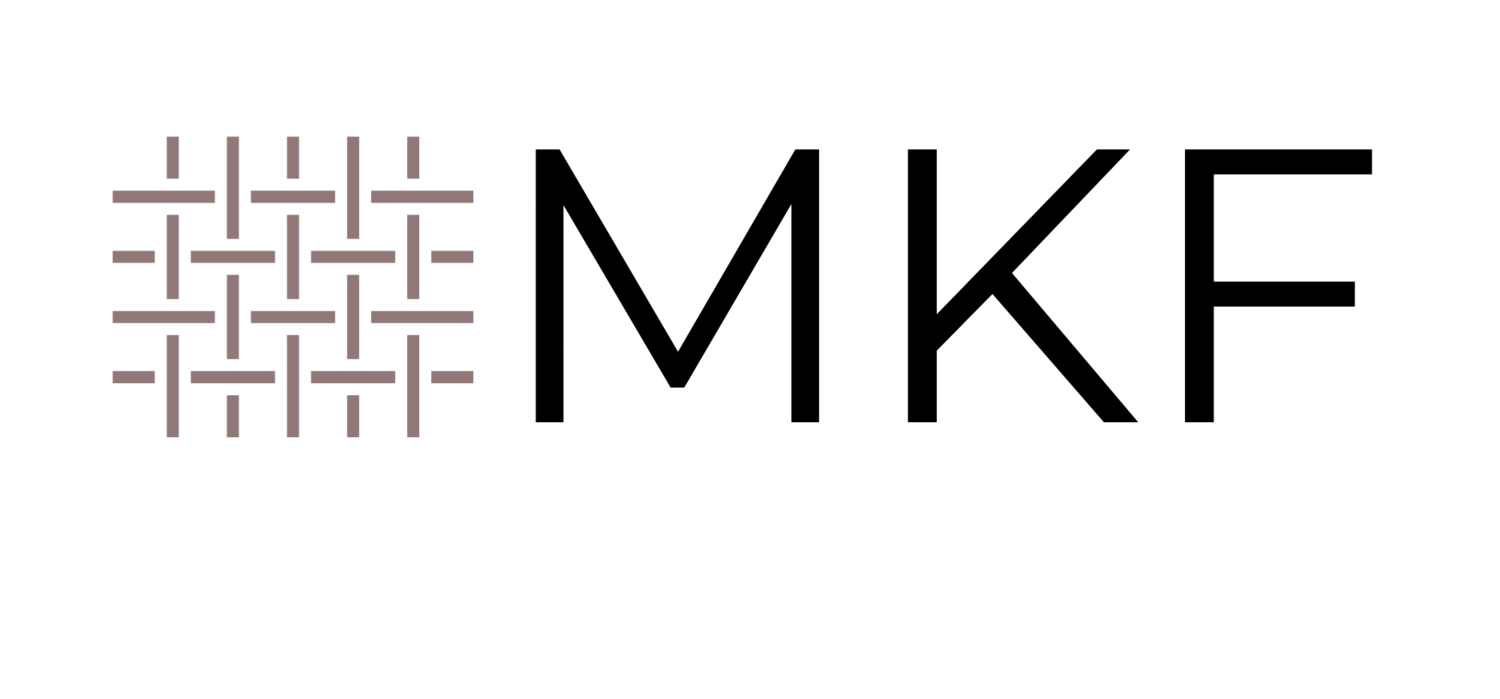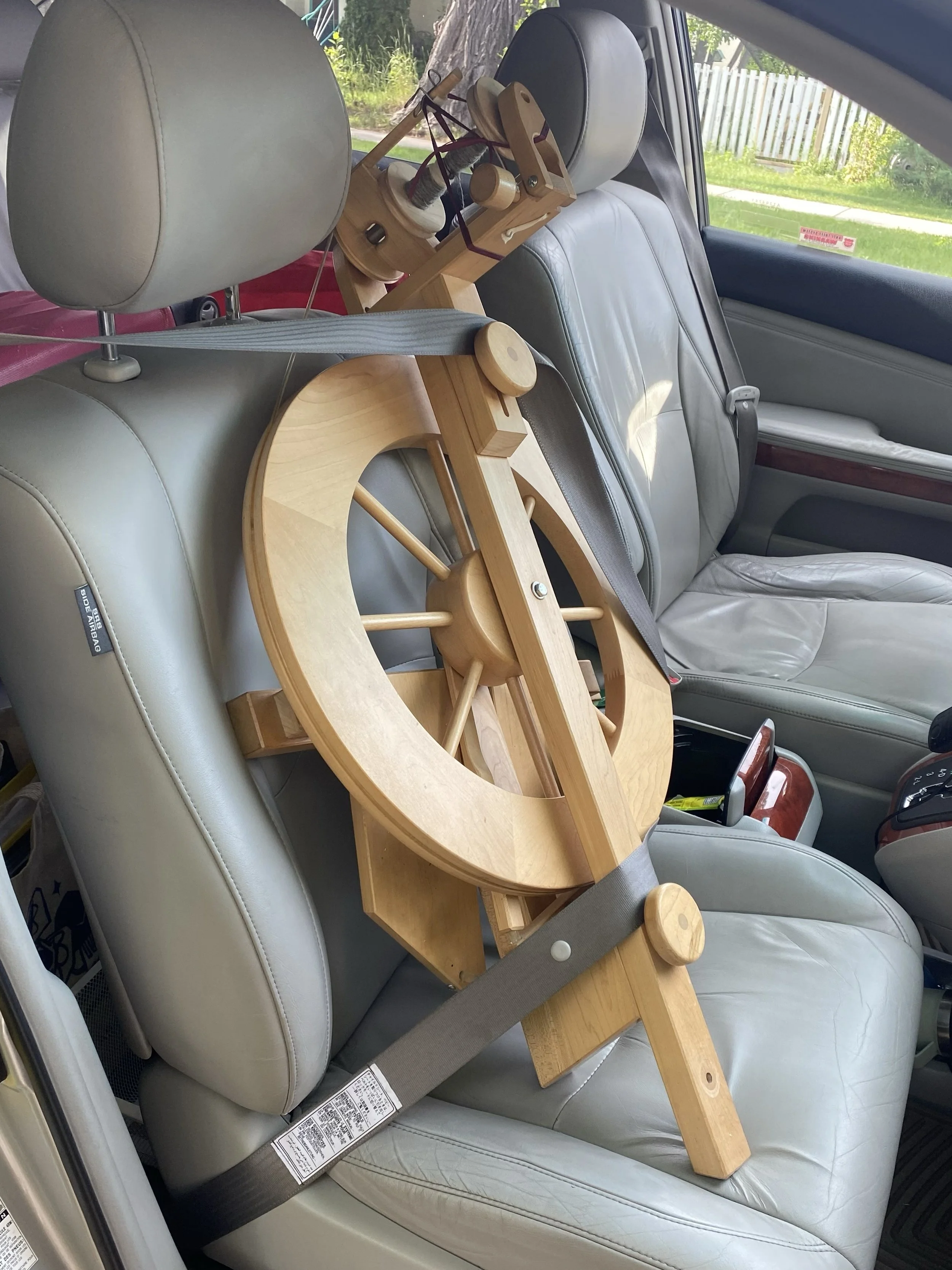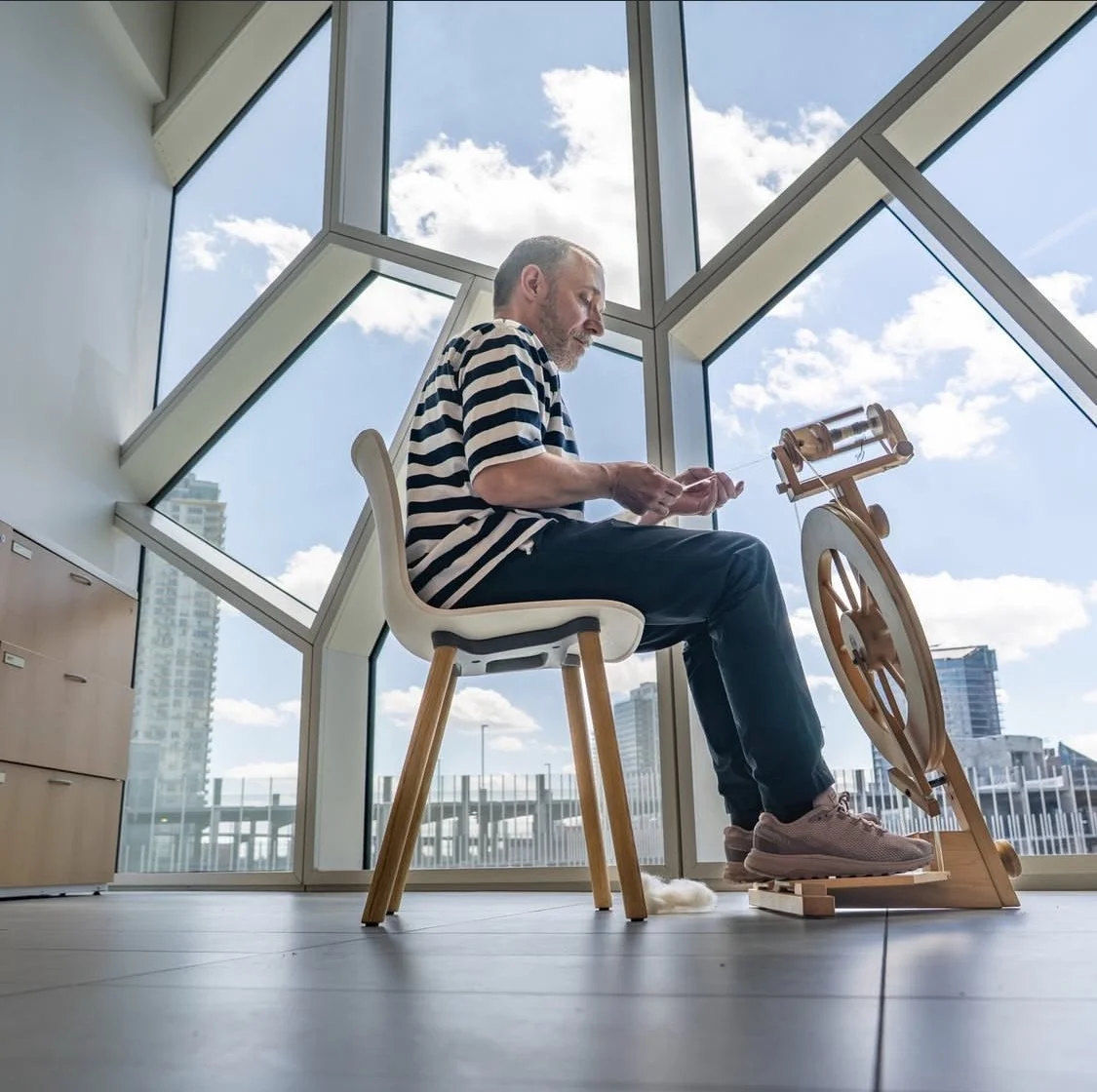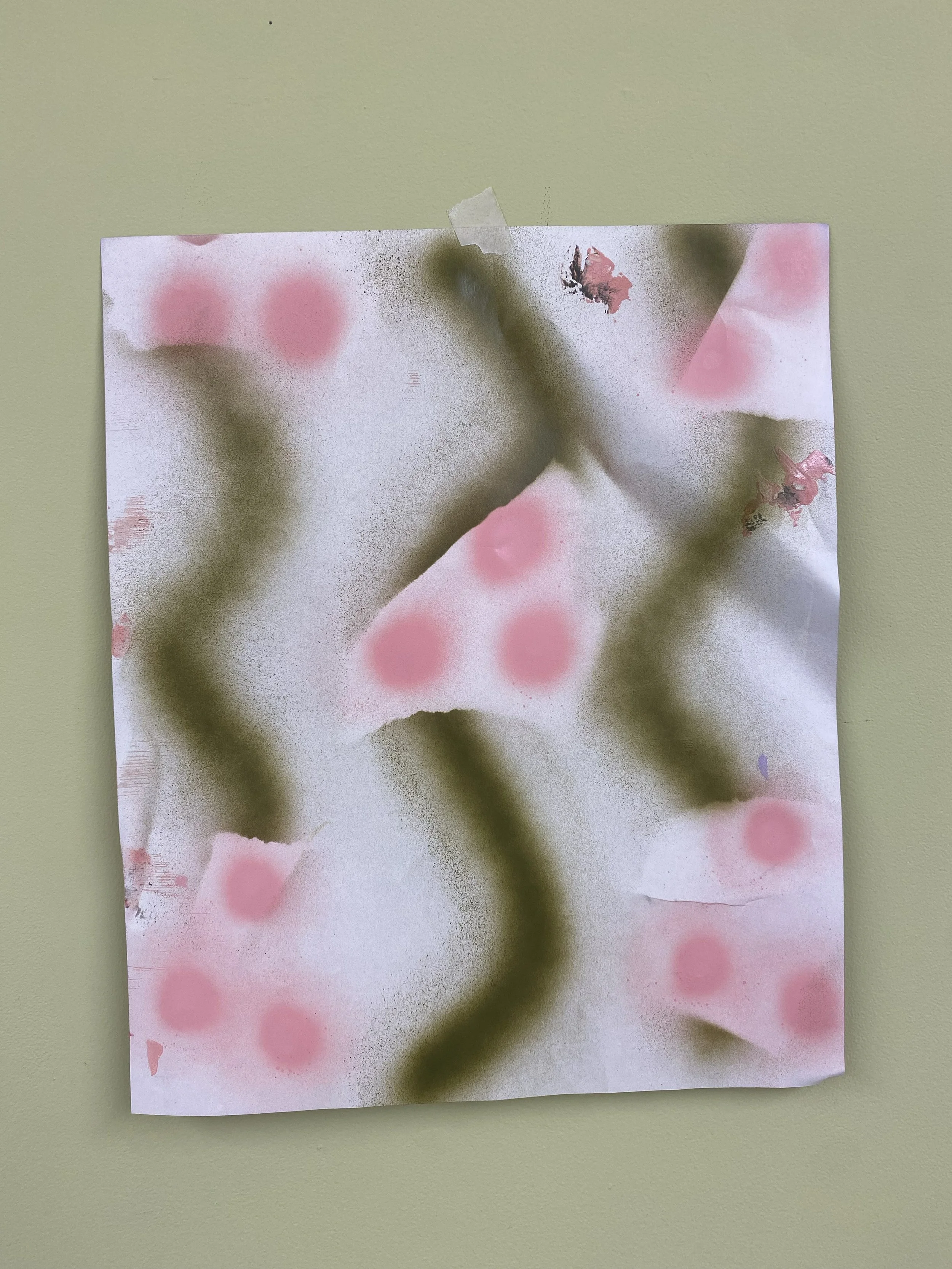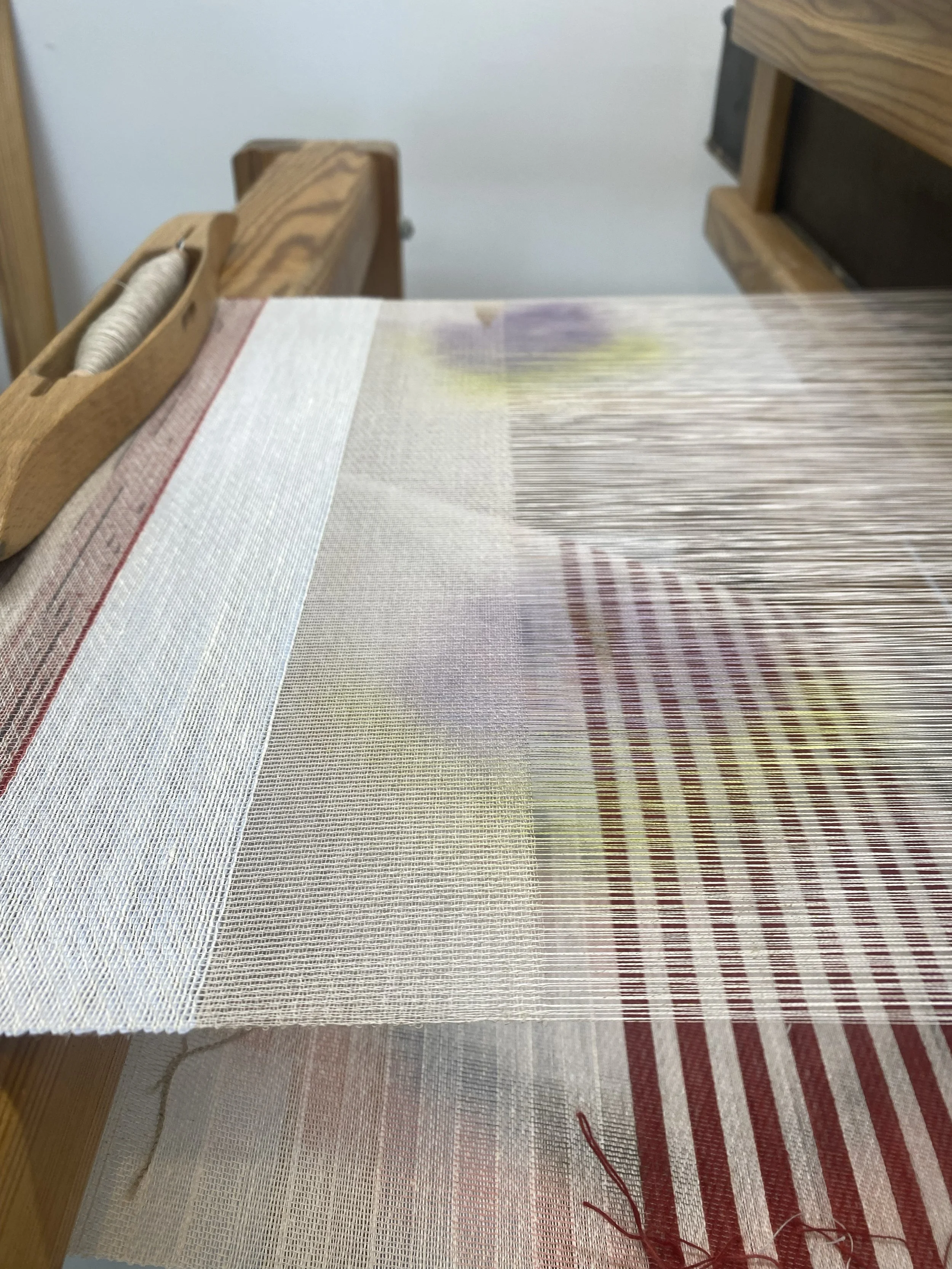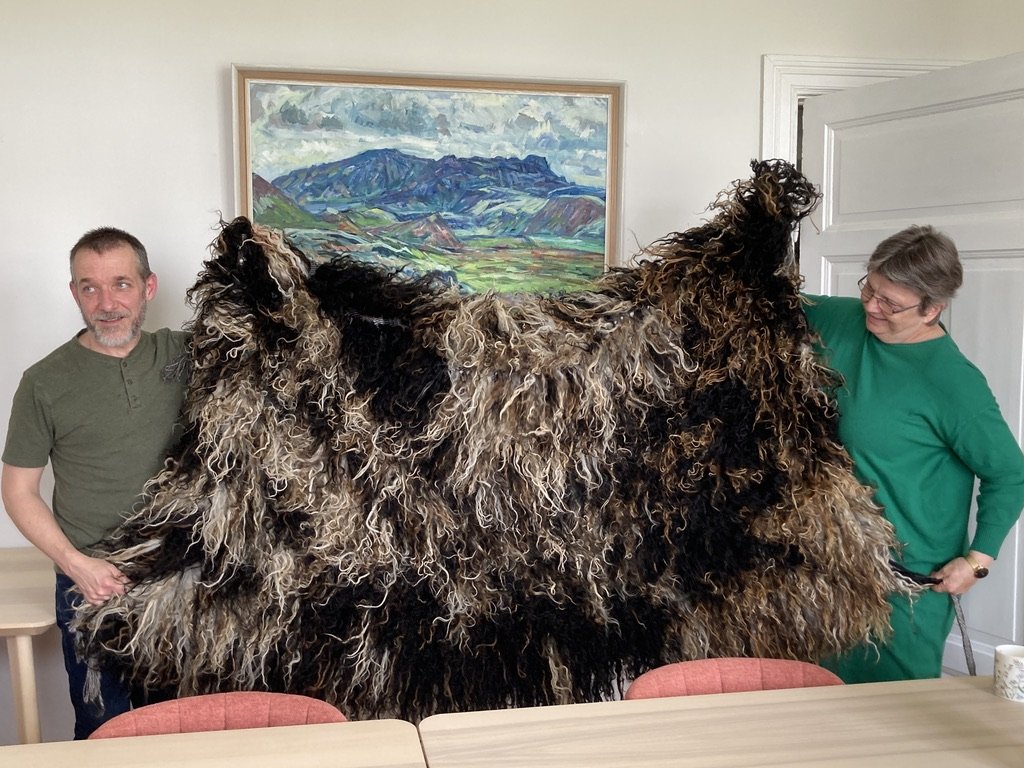Spinning
In July, I packed up my spinning gear and four (maybe five?) fleeces to begin an artist residency at the Central branch of the Calgary Public Library. Since then, I’ve been at the library twice a week engaging with visitors and working on some yarns for weaving. It is hard to believe I am now more than half way through and will be finished mid-September.
Spinning some fine worsted with Border Leicester/Dorsett with an very long 18-21 cm staple.
The residency has involved many demonstrations of spinning on the wheel along with the creation of steadily-improving, fine worsted samples for weaving. I had planned a little more work for the residency, but have realized that I may as well embrace the many opportunities for conversation and engagement with fibre-curious folk - and there are many.
Something about the wheel and the gorgeous natural-coloured fleeces draws people in. More often than not, they will share a story about their aunt, grandmother or daughter-in-law who also works (or did work) with fibre in some way. I’ve heard stories about spinning monks in Ethiopia; a grandmother in Serbia who used to weave for her family; and a young woman who recently moved to the city looking to connect with a local fibre artist community. In short, it is feeling really special to meet all of these curious people and connect with them through textiles.
Table in my residency studio with fleece, handspun yarns and spindles - notice the little purple one painted by my daughter as a Father’s Day gift.
Tonight I am teaching my first spindle spinning workshop at the Crowfoot branch and will be teaching two more - one at the Central Library (Thursday August 21 from 6-730 pm) and another at the Shawnessy Library (Saturday August 23 from 2-330 pm). I believe there a re a few spots left in the workshop at Shawnessy. Register HERE with your library card.
Can you tell I am focusing intensely on my posture while trying to ignore the fact that spinning with shoes on is very distracting?
September 6, I will also be making an interactive presentation “Where Does Your Wool Come From?” with Tara Klager of Providence Lane Homestead at the Central Library. I am looking forward to sharing my passion for local wool along with my favorite co-conspirator. If you havent already subscribed to Tara’s newsletter you should definitely check it out. This weekend I am also collaborating with Tara on a grass cordage workshop at her farm for Open Farm Days 2025. Follow this link to learn more.
Mandy Vocke wrote a feature about my residency at the library that you can read HERE. It has been a true gift to spend time spinning in the beautiful downtown public library. I am grateful for the conversations and connections made so far. I highly recommend this residency to any artist who enjoys teaching and demonstrating while they work.
Folding
Detail of “Folding vernacular (towel)” woven in silk and linen, coloured with madder dye, sumi, acrylic spray paint and soon to be mounted on handmade wool felt
In June I finished weaving a series of small cloth pieces experimenting with acrylic spray paint on a very fine silk organzine warp set at 60 ends per inch. The structure allows for two wefts to appear distinctly on either side in a two-faced cloth. If a weft is omitted the warp painting is revealed. If the single weft is very fine, transparency is possible.
Sketch for a floral pattern used in “Folding vernacular (bedsheet)”
While weaving these pieces I was thinking around textile pattern vernacular and how it may be redeployed as a kind of affective abstraction. As I worked, I intentionally avoided looking up specific patterns and instead relied on memories of specific scraps of cloth from my grandma’s sewing cupboard, sheer curtains in a nearly forgotten apartment and kitchen towels. Painted onto the warp with spray paint, a very soft image appears in the cloth, fading and emerging at once.
Two pieces on the loom showing transparency.
From the start I decided on some kind of folded presentation for these experiments. Initially this was because of the unique character of the two sided cloth and not wanting to hide the reverse. Choosing a “good” side was next to impossible. As I worked to finish each panel, the notion of folding became something more - linked to the experience of cloth as a mutable, textual object. Cloth may be folded, crumpled or draped. Each state change is enacted through touch at once mundane and intimate. What if there is a quiet language of folding cloth that could inform my composition in these works? For example, in folding a towel my hand lays the first fold flat before making another. The automatic nature of gestures that fold then unfold - or even the way we reorient our body during dressing point to the sort of thing I am thinking about here. See also Sharon Blakely and Liz Mitchell’s essay “Unfolding: A multisensorial dialogue in ‘material time’” For now I am going to leave this all a little unresolved until I’ve had more time with the work.
Felting
Laying out Combed Border Leicester fleece for mounting the “Folding vernacular” pieces.
After some sampling, I devised a plan for a backing material that I will use to mount the “Folding vernacular” series. Handmade wool felt is perhaps not the most time efficient choice. But, the particular felt I can achieve with this beautiful Border Leicester fleece is unlike anything else I might find elsewhere. The plan is to mount each folded work on its own panel fo felt which itself will be presented on a birch panel.
Felt in process after wetting out the fibre.
Nearly-finished felt will be rolled a bit more then steam pressed.
An Exhibition
“Drawn” is coming to Mohkinstsis (Calgary)! My solo exhibition originally shown at the Discovery Gallery at the Alberta Craft Council in Edmonton will soon be installed at the craft council’s space at CSpace. I am thrilled to be able to share this work along with the new “Folding vernacular” series in my hometown.
The exhibition runs from September 6 to November 1, 2025 with an opening reception September 13 from 2-4 pm and artist talk September 27 from 2-330 pm. If you are planning a visit, let me know and I’ll try to meet you there! CLICK HERE for more information including gallery location and open hours.
